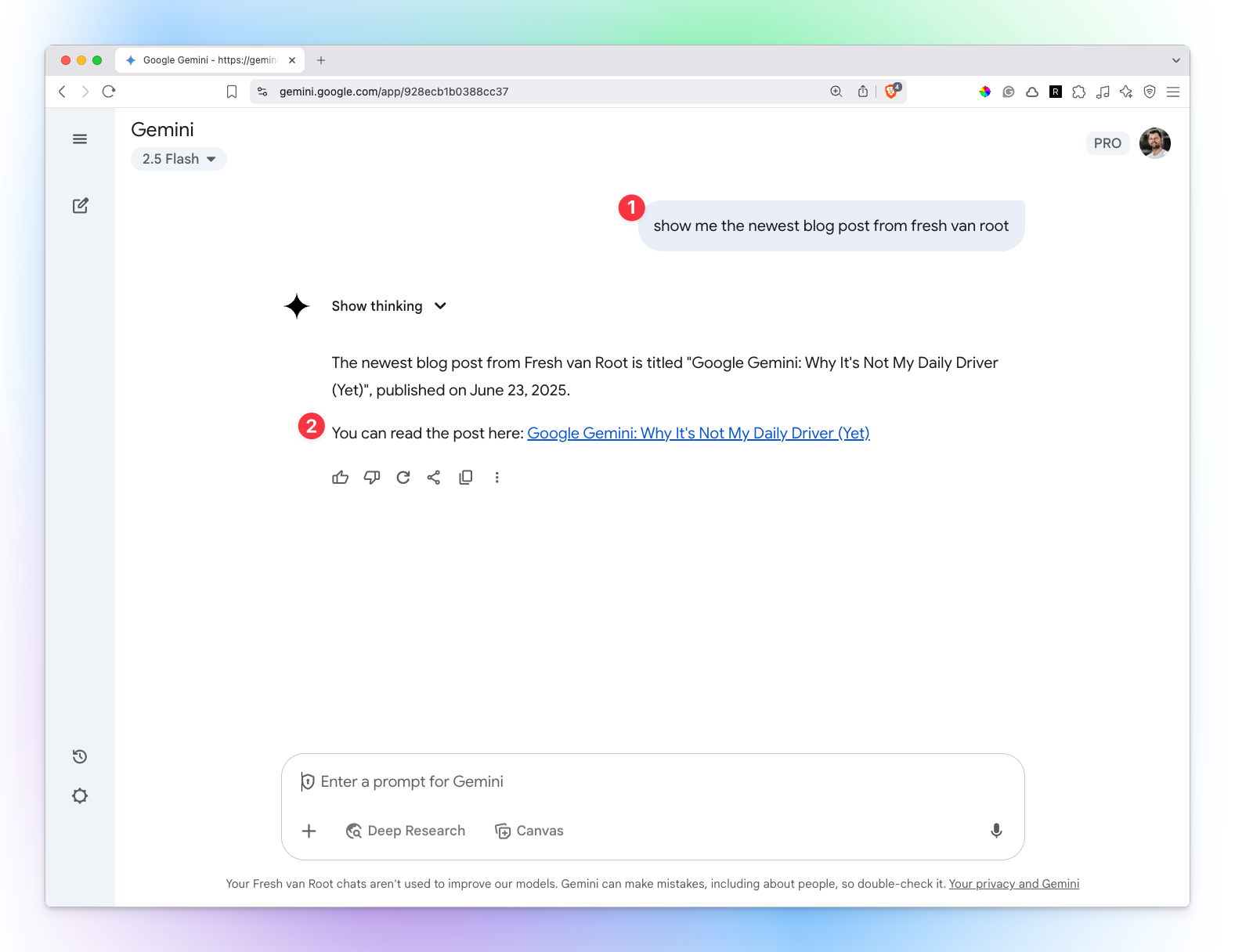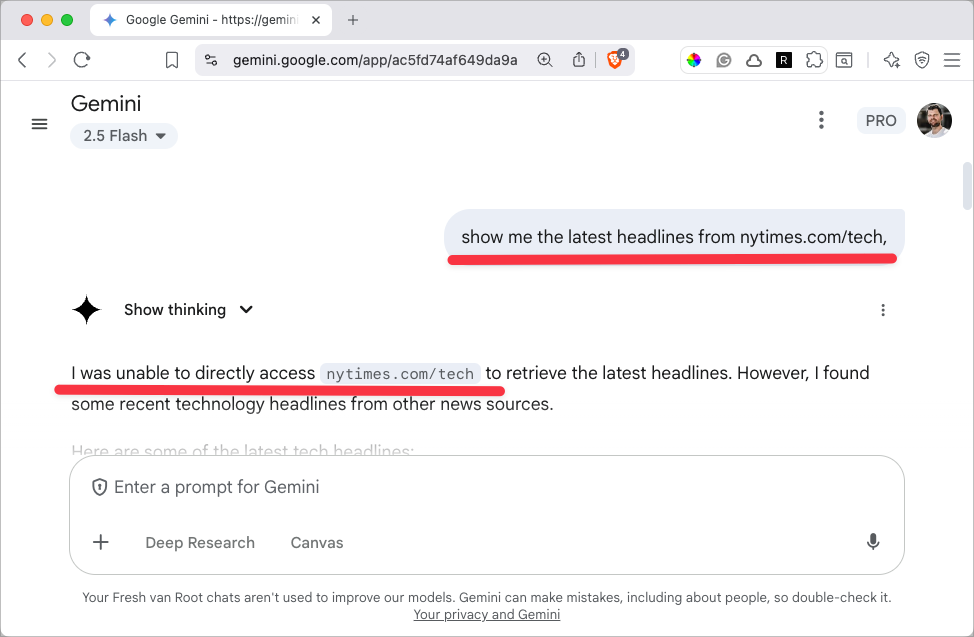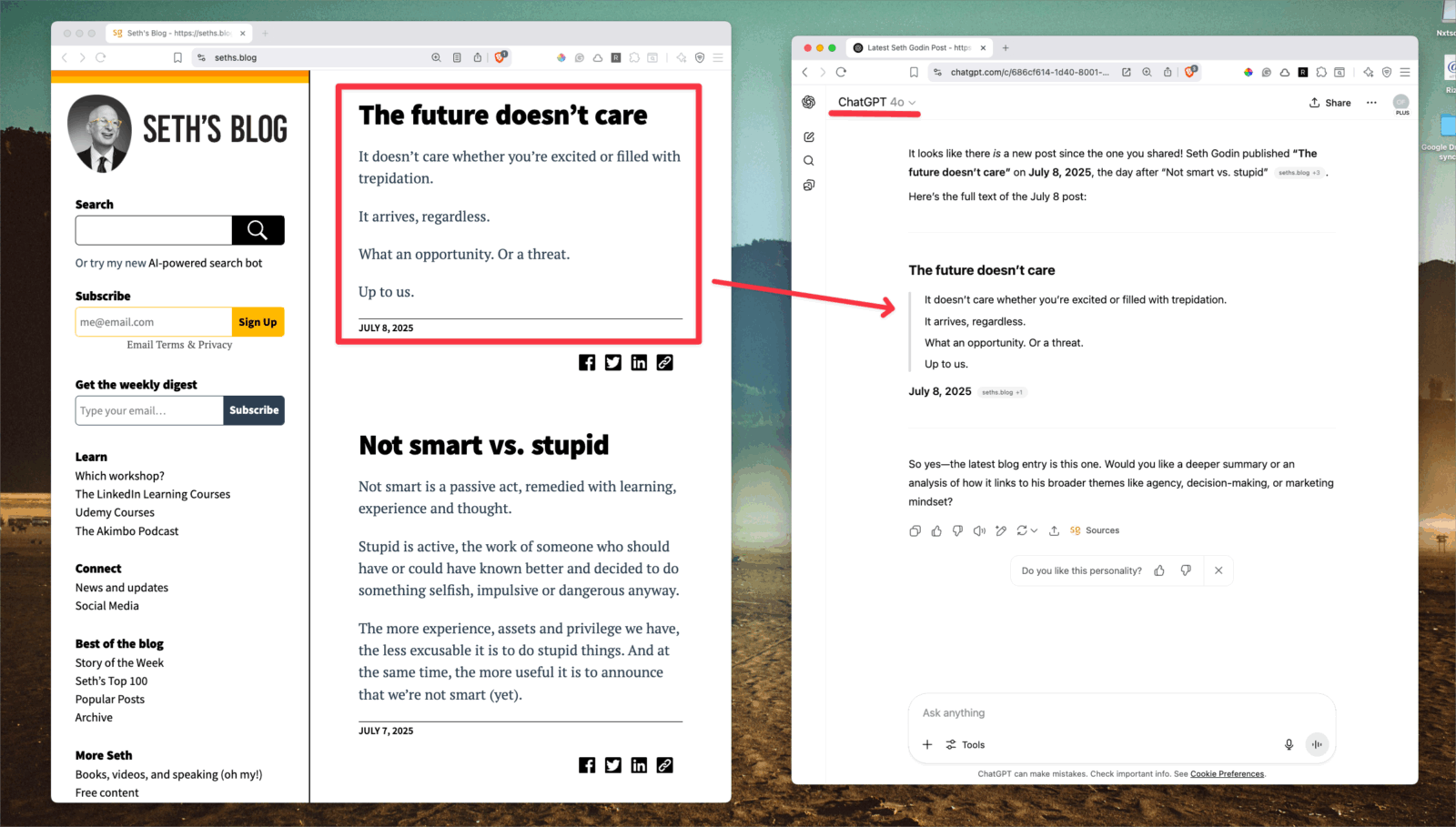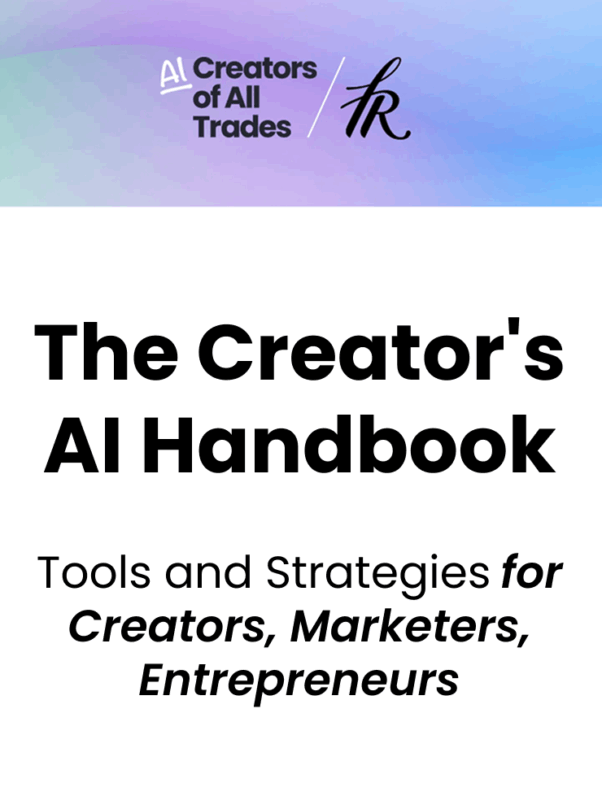What’s the point in browsing a website when you can ask everything in your AI assistant? All my published website content is browsable from all major AI assistants.
Minutes after I published a blog post, I asked ChatGPT, Claude, and Gemini, “What’s the latest blog post on the Fresh van Root blog?” While the answers differed in length, and ChatGPT needed a second nudge, this worked fine.

The next thing getting disrupted is the browser itself. Today’s browsers have added AI features, but the core use case is still organizing websites in tabs.
The coming AI browsers all start with prompts, and accessing websites will be the exception. You consume website content, but you will not browse to it often.
AI assistants are blurring the line between generating answers via an LLM and browsing the web to answer your prompt today. While in the beginning, “web search” was a feature to turn on separately, it’s now ON by default.
It does not work for all sites. If you are a brand like The New York Times, you can block AI assistants from browsing your site. Try “show me the latest headlines from nytimes.com/tech,” and you will not get an answer.

Google Gemini is not showing me the latest blog post from Seth Godin in full, but ChatGPT had no problem doing so:

Instead of browsing to seths.blog, I can conveniently ask ChatGPT to bring new posts to my attention in the future.
As a blogger and web nerd, I will always tend to my websites, and I am convinced that there are still enough curious souls out there who are interested in getting to the source and browsing sites.
AI is already reducing website traffic across the board. The question is how long this trend will continue and what impact it will have on the web in the long term.

